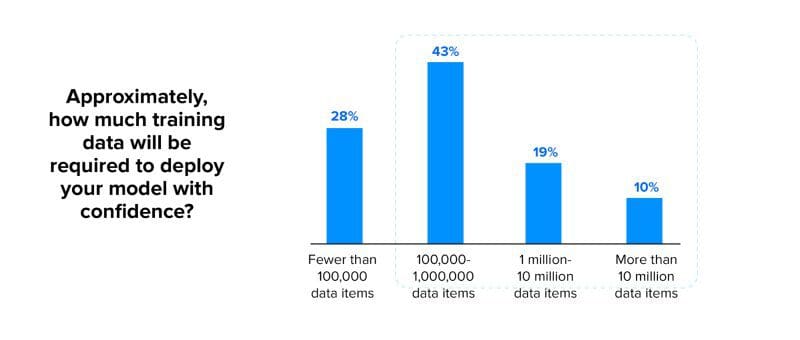Top 5 Reasons Why Machine Learning Projects Fail
The rise in machine learning project implementation is coming, as is the the number of failures, due to several implementation and maintenance challenges. The first step of closing this gap lies in understanding the reasons for the failure.
By Sudeep Srivastava, CEO of Appinventiv

With every other trend report touting machine learning as a growth-friendly technology set to make industries (across sectors and regions) customer and revenue friendly, organizations are taking a cue and doubling down on their machine learning adoption efforts.
While there is an evident rise in the number of machine learning app development projects, there’s an almost equal rise in the number of project failures. The increasing failure rate of machine learning projects is in many ways keeping new businesses with brilliant AI ideas away from implementing them.
The intent of our article today is to help you get acquainted with the many reasons behind machine learning projects’ failure. We are hopeful that the information will help you plan a better implementation, one that carries fewer chances of failure in all three stages of ML execution: pre-project, during the project, and post-project.
The Top 5 Reasons Why Machine Learning Projects Fail
1. Insufficient data
If there’s anything the graph tells you, it is the fact that there is a need for a massive amount of data for a machine learning project’s success. For a successful machine learning project, businesses need to have access to clean data - data which is relevant, useful, free of inaccuracy, and accessible.
In addition to having clean, structured data, it’s also mandatory that the data must be readily available for both short tasks and large scale training in one place - a data warehouse, data lake, or some data platform.

2. ML Models unsynchronized with the legacy systems
On the advice of data scientists, organizations tend to add models that are designed to foster innovation without thinking of their alignment with their present ‘non-digital’ culture and legacy systems. So while those solutions run well in the market, when incorporated with the existing system, there is little to zero success rate in terms of ease of adoption.
The solution to this lies in bringing the teams that will be working on the machine learning project and the one that manages the legacy system together. Following this, a milestone-wise deployment of the project should be planned for aiding easy adoption with a friction-less migration.
3. Lack of enough data scientists
There is a massive shortage of data scientists in the market. Although there are a number of engineers completing courses and tagging themselves as data scientists, the ones who are truly skilled to see through a complex ML project are extremely limited in number. According to a 2020 State of Enterprise Machine Learning report, while the demand for Machine Learning experts is on a constant rise, there is a sharp shortage in terms of supply to fill the role.
4. Difficulty in updating
As time passes by, machine learning projects tend to get outdated and fail to remain the best solution to the business problem. This usually happens because of:
- The business situation changes
- A shift in users’ demands
- Better models come into the market.
Usually, the updating of an existing ML model is difficult and time-consuming: in many ways, it is equivalent to building a new data science project. Noting the difficulties, organizations generally tend to continue working with the model till much after they stop providing the results.
5. Lack of leaders’ support
Sometimes leaders lack the patience and technical confidence needed to fulfill a machine learning project. While they back the project seeing the fame that surrounds it, they pay less attention to ensuring data accessibility, accuracy, funds and manpower requirements, etc.
For a machine learning project to be successful, it is very important to keep everyone on board — especially the board members — since even a hint of doubt in them can lead to a lot of insecurity among the teams, something that guarantees project failure even before it sets off the ground.
The Parting Words
So here were the top challenges that are keeping machine learning from reaching an adoption level that businesses and industries need for surviving and maintaining a competitive edge.
The solution to addressing these challenges more often than not lies with partnering with a skilled machine learning solution provider company that understands both business and technical implications of applying a new-gen technology in a non-digital organization. They can help you in not just creating a work plan of how to integrate machine learning projects but also with adopting the new system in the most optimal way.
Bio: Sudeep Srivastava is the CEO of Appinventiv, is someone who has established himself as the perfect blend of optimism and calculated risks, a trait that has embossed itself in every work process of Appinventiv. Having built a brand that is known to tap the unexplored ideas in the mobile industry, he spends his time exploring ways to take Appinventiv to the point where technology blends with lives.
Related:
- When good data analyses fail to deliver the results you expect
- Learn to build an end to end data science project
- Want to Be a Data Scientist? Don’t Start With Machine Learning
